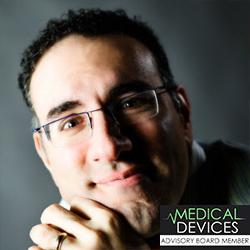Editor’s note: At the end of 2015, Congress passed a year-end budget package that included wins for the healthcare industry. President Obama signed approval. The bill suspends the 2.3 percent tax on medical devices for two years, stops a levy on health insurers for a year and, postpones the “Cadillac tax” on higher-cost insurance policies for two years until 2020. The suspension of the tax is considered by many to be an important step towards the total repeal of the medical device tax that groups have been lobbying for since before it was passed in 2013. Repertoire asked Joe Hage, leader of the Medical Devices Group, to offer his insights on what med device manufacturers are saying about the tax’s suspension and how it could impact their organizations.
By Joe Hage, Leader of the Medical Devices Group (300,000+ members)
By now, you’re quite familiar with the medical device industry narrative on the tax: It is an excise tax on sales and it’s unfair. The tax costs jobs. It takes money that otherwise would have been spent on research and development. It hinders innovation and disproportionately hurts start-ups whether they show a profit or not.
With the tax suspended for two years, industry insiders are publicly debating the “new narrative” in the Medical Devices Group forum at http://bit.ly/wow2point3. The strawman version put forth by Paul Stein goes something like this: We have a two-year window to show we were right about the damaging effects of the tax.
How to do that? By redeploying revenues into capital equipment purchases, job creation, and research and development. Because if, in two years, Congress simply discovers higher bonuses and higher per-share earnings, they’ll reinstate the tax permanently.
The tax is a polarizing issue, even among medical device manufacturers! The varied opinions are too numerous to cite here (see http://bit.ly/wow2point3). Some highlights include:
- Focus on R&D: I don’t see how any new jobs will be added. Consolidations have already taken happened and tax inversions will further shift jobs overseas. They need to focus on research and incentives to bring manufacturing back. (Stephen Song)
- Focus on VC dollars: Rather than new jobs, it is probably more realistic to look out for and trumpet any VC funding that comes after the suspension. It is probably unrealistic to expect jobs to be added as a result of the suspension of the tax. (Bruce Carlson)
- Focus depends on size: For large companies, the tax suspension is about jobs and reinvestment. For small companies, it’s about trying to become profitable. (Steve Anderson)
- Focus on our actions: We’re already adjusting our financial projections… and everything is put back into the company for continued growth. Hoping the larger industry players follow suit. (Gali Baler, PhD)
- Jobs will not return: Once the $40 million factories are up and running in Costa Rica or Singapore, those jobs are gone for good. R&D is another matter. Big companies, those that are diversified, got taxed on a sliver of their revenues. It made smaller companies takeover targets. (John Eckberg)
- It will be inconclusive: Economic systems are not so “cause-and-effect” simple. Just as the tax was overstated as being a “job killer,” removing it will likely be over-expected to increase jobs and save businesses. (John Abbott)
- It’s a bigger issue: The heart of the issue is not solely the medical device tax; it is the business tax system in the US that penalizes and makes US companies non-competitive. (John D. Miller)
Conclusion
While the emphasis in the above opinions varied, almost all agreed on a basic tenet. With the tax suspended for two years, it’s incumbent on industry to show something good to come out of the suspension. Otherwise, we shouldn’t be surprised to see the medical device tax return in two years.
Joe Hage leads the world’s largest Medical Devices Group, the industry’s only spam-free, curated forum for intelligent conversations with medical device thought leaders. Mr. Hage’s medical device marketing services and MDMS Marketing and Sales Program help companies engage qualified prospects and his 10x Medical Device Conference unites Medical Devices Group members in an intimate and educational forum each year.
